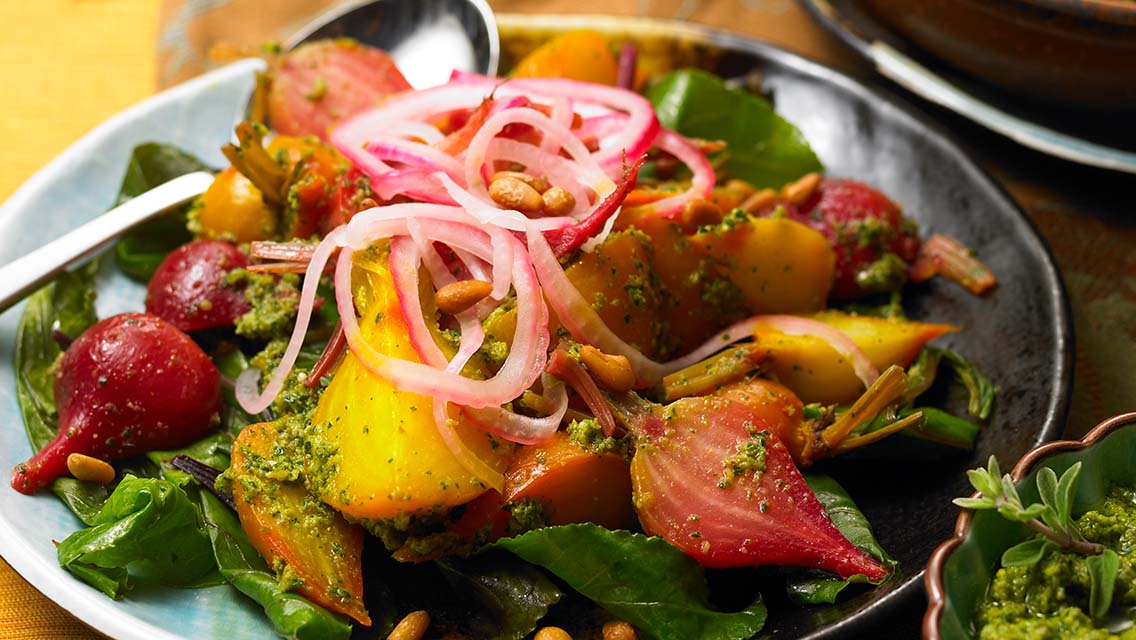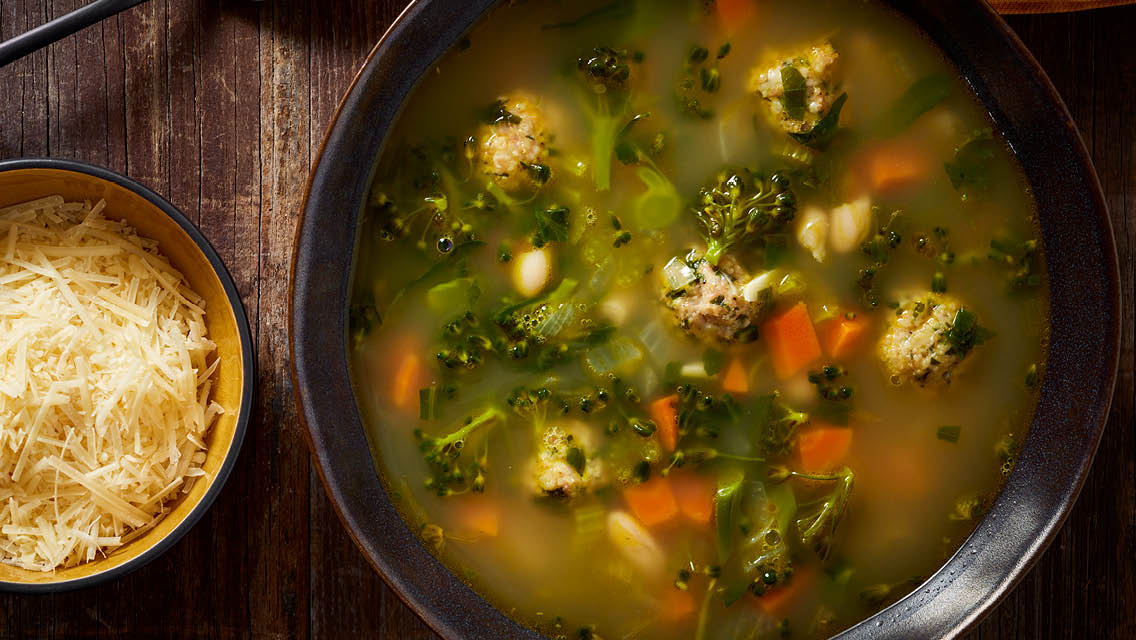Lots of people see the northern winter as an empty, fruitless time. But it wasn’t always so: Just a generation or two ago, the people living even in legendarily snowy parts of North America dined year-round on an abundance of local foods. Did this help them see winter not as a barren time, but as a time for rest and restoration among abundance?
To understand how a northern winter could be abundant, it’s important to keep in mind that the foods our forebears ate were different. There weren’t mangoes in January, of course, but they weren’t missed because the root cellars were full of “keeping apples,” as well as parsnips, rutabagas, parsley roots, beets and squash varieties we now regard as exotic. In addition to the root cellars, the actual farm fields were filled with vegetables, like Brussels sprouts, that kept growing in good condition despite a little dusting of snow. As if that weren’t enough, the pantries were filled with dried beans, dried fruits, nuts and all sorts of winter-ready local farm produce.
The abundance of the northern winter is particularly vivid on the pages of Deborah Madison’s Local Flavors: Cooking and Eating from America’s Farmers’ Markets. Madison is probably the nation’s premier vegetable chef, and this book is her guide to how to cook the foods you can actually find in real farmers’ markets. As such, it’s a tremendously helpful resource for those trying to eat the two ways our ancestors did: locally and happily.
Madison blanches Brussels sprouts, cauliflower and broccoli, and dresses them with a mustard-caper butter to bring the richness of late-winter fields indoors (see the Web Extra! at the top right of this page). She turns parsnips into salads, galettes and braises, releasing those sweet, pale roots from their conventional role as a soup partner to carrots. Meanwhile, even late-season radish greens and feathery carrot tops find their way into her unexpectedly vibrant soups and salads. Who knew the northern winter could be so tasty?
Evidently, everyone who came before us, says Madison. “It’s funny — we crave variety, and so our supermarkets are so full of variety that there’s an almost obscene amount of choice,” she notes. “Yet, on the other hand, we’ve taken to habitually overlooking or ignoring all of these vegetables, fruits and so forth that are a part of our culture — and for what? In favor of having the same green beans all year long.”
Those trucked-in green beans, asparagus and other heat-craving vegetables have forced many classic North American winter vegetables like rutabagas, turnips and parsley root out of the average grocery-store produce aisle. What’s even more distressing, however, is that because farmers have stopped growing them, many of our most extraordinary cold-climate foods are on the verge of extinction.
Gary Paul Nabhan offers portraits of some of these foods in his new book, Renewing America’s Food Traditions: Saving and Savoring the Continent’s Most Endangered Foods, which includes a foreword by Madison. Nabhan catalogues dozens of foods that were once critical parts of the North American diet, but are now gradually disappearing.
The Short and Thick parsnip, for instance, was once grown and eaten in all the snowier parts of the United States and Canada because it grew fast and kept for months. Now it’s only commercially available from a single company, Saskatchewan’s Prairie Garden Seeds.
The Arikara Yellow bean is a fast-producing bean that was prized in places with short growing seasons like North Dakota — it even kept Lewis and Clark alive on their cross-continent journey. Now it’s all but unknown in a country that has replaced so many of its native food traditions with produce bred for long-distance hauling.
“The saddest thing happened the other day,” Madison told me. “I was baking something with an apricot from the supermarket, and my husband actually had to ask me what he was eating because the fruit had no taste.
“It’s really dreadful — so many people are eating fruits and vegetables because they’ve been told they should,” she continues, “but the varieties aren’t grown for taste; they’re grown for shipping, so they taste awful. And they’re expensive.”
Madison suspects that the only reason people tolerate this total lack of satisfaction in their food is because they’ve been told to eat five servings of fruits and vegetables a day. “So they don’t smell what they’re eating, they don’t taste it,” she says. “They just put it in a bag and go out the door like it’s a prescription.”
But the real prescription for having a healthy life might be to rediscover the original great foods of the northern winter, and to let that particular flavor of abundance both nourish and restore you.
Beets and Their Greens With Marjoram and Pine Nuts
Serves four
- 2 small red onions, thinly sliced into rounds
- White wine vinegar
- 8 to 12 small beets, golden and/or Chiogga, including the greens
- Olive oil
- Sea salt
- Marjoram Pesto With Capers and Olives (see below
Directions
- Toss the onions with vinegar to nearly cover, and refrigerate until needed. They will turn bright pink.
- Discard any wilted leaves, wash the rest, and steam until tender, about five minutes. Set aside to drain, then chop coarsely. Toss with a little olive oil and season with salt.
- Leaving an inch of the stems and tails on the beets, steam until a knife pierces them easily, about 25 minutes. Slip off the skins. Trim the tops and tails, quarter them, and sprinkle with a little vinegar.
- Make the pesto, setting aside half the toasted pine nuts as a garnish. Toss the beets with it, leaving ample streaks throughout. Place them over the greens. Remove the onions from the vinegar and strew them over the beets. Garnish with the reserved pine nuts and serve.
Brussels Sprouts With Cauliflower and Mustard-Caper Butter
Serves eight or more
The Mustard-Caper Butter
- 2 garlic cloves
- Sea salt and freshly ground pepper
- 6 tbs. unsalted butter, at room temperature
- 2 tsp. Dijon-style mustard, more or less
- 1/4 cup drained small capers, rinsed
- Grated zest of 1 lemon
- 3 tbs. chopped marjoram
Directions
- Pound the garlic with 1/2 teaspoon salt in a mortar until smooth, then stir it into the butter with the mustard, capers, lemon zest and marjoram. Season with pepper. The butter can be made a day ahead and refrigerated. Bring back to room temperature before serving.
The Vegetables
- 1 lb. Brussels sprouts or 1 whole stalk, stripped of its sprouts
- 1 small head white cauliflower
- 1 small head broccoli Romanesco
- Sea salt and freshly ground pepper
- Trim the base off the sprouts, then slice them in half or, if large, into quarters. Cut the cauliflower and broccoli into bite-sized pieces.
Directions
- Bring a large pot of water to a boil and add salt. Add the Brussels sprouts and cook for three minutes. Then add the other vegetables and continue to cook until tender, about five minutes.
- Drain, shake off any excess water, then toss with the mustard-caper butter.
- Taste for salt, season with pepper, and toss again.
Marjoram Pesto With Capers and Olives
- 1 small slice country bread
- 2 tbs. aged red wine vinegar
- 1 garlic clove, coarsely chopped
- Sea salt and freshly ground pepper
- 1/4 cup marjoram leaves
- 3 tbs. drained capers
- 1/2 cup pine nuts
- 1 cup finely chopped parsley
- 2 tbs. pitted Greek olives
- 1/2 cup extra virgin olive oil
Directions
- Remove the crusts from the bread, then soak the bread in the vinegar on a plate.
- Pound the garlic with 1/2 teaspoon salt in a mortar until smooth, then work in marjoram, capers, pine nuts, parsley and olives, until you have a coarse purée. Add the bread and the olive oil and work until the pesto is well amalgamated.
- Season with pepper, taste for vinegar, and add a little more if you think it needs it. The pesto will be very thick.
Recipes excerpted from Local Flavors: Cooking and Eating from America’s Farmers’ Markets by Deborah Madison (Broadway Books, 2008).




This Post Has 0 Comments